The phrase, “the avant-garde collection,” despite sounding both authoritative and precise, is a phenomenon that occurs (or, if you prefer, occurred) relative to a specific historical moment of quite limited duration, in which the art or artist referred to was leading the charge, in the front ranks—it is a military expression, after all—of the latest reliably disruptive manifestation of the new.-Dan CameronChief Curator, OCMA
I had the opportunity for a Q&A with Dan Cameron and Fatima Manalili on their co-curated exhibit, The Avant-Garde Collection, at the Orange County museum of art.
Conversation with Dan Cameron
What was most challenging about curating this exhibition?
I’d have to say that the most challenging part of the curation of the exhibition had to do with shaping the selection of individual pieces around specific periods and movements. Our collection is not organized according to styles or formal issues, so it meant doing a lot of cross-referencing between works, many of which hadn’t been seen in years.
What kind of intake and impact do you hope the viewers of this exhibition will take home with them?
Conversation with Fatima Manalili
What attracted you first to the idea of this exhibition?
There are many important works in the collection that haven’t had the opportunity to display for a long time. There were also a few that have never been shown. We wanted to figure out a way to show both categories in a manner that made sense and served the work justice in its context.
What was that certain mood and message that creatively you wanted to pass on?
Looking back and thinking forward.
How would you describe your approach to curating this exhibition? Did you mean to educate the public or to provoke, awaken and inspire them?
All of the above! The exhibition is organized roughly in chronological order so there is an art historical lineage being traced out. But we also chose artists and works that are timeless, that provoke and inspire independently.
What was most rewarding about curating this exhibition?
Continuing to support the artists in the collection and sharing them with the community.
What does this exhibition represents to you? Could you consider it arriving at one of your creative summits?
As a junior curator, collaborating with Dan was a privilege and a learning experience. I relied heavily on his expertise and he in turn encouraged creative interpretation. For me, I’m still on a journey towards a creative summit.
What are some of your more favorite pieces in this exhibition?
John Mason’s Vertical Sculpture, Blonde (1961) and William Wegman’s Selected Works: Reel 1-7 (1970-77). Both artists pioneered and championed his choice of medium, ceramics and video, respectively.
See the Avant-Garde Collection on exhibit at the Orange County Museum of Art from September 7, 2014 to January 5, 2015 | http://www.ocma.net
ABOUT THE AVANT-GARDE COLLECTION
NEWPORT BEACH, CA—As part of the Orange County Museum of Art’s ongoing examination of its first 50 years, the museum presents the The Avant-Garde Collection—focusing on the evolving definition of avant-garde as it is represented in its collection. With Cubism, Abstract Expressionism, Pop, performance, and installation art in the 20th century and the pluralist tendencies of the 21st century, the challenge for artists to produce innovative work that conceals the influence of generations past is more daunting than ever. The exhibition illustrates this discourse with approximately 100 artworks that include painting, sculpture, assemblage, installation art, and video in myriad styles that all speak to the reactionary spirit of the avant garde. The exhibition is on view September 7, 2014, through January 4, 2015.
In the 1920s, Cubism was as adventurous as most artists could get, whereas, by 1950, abstract expressionsism was the vanguard. In the 1960s it was cutting-edge to employ imagery from popular culture. In the 1970s performance and installation were the bywords of originality. In the 1980s new media and appropriation appeared on everybody’s radar for the first time, while the 1990s in retrospect were mostly about identity politics and post-colonialism. With the myriad movements of the 21st century alongside new art from around the globe, we see more than ever artistic producetion that is innovative in form or medium. Whether these narratives find a place in history as significant cultural benchmarks remains to be seen, but nonetheless, they are facilitators of the concurrent dialogues and paradigm shifts occurring today.
Avant-garde communicates nothing at all about the quality of the work over time, nor does it adhere to any style or movement—providing a sound reason for why one should probably avoid describing the permanent collection of an art museum as essentially avant-garde. OCMA has come into possession of works that were demonstrably avant-garde at the time of their creation, regardless of how future generations have come to see them. The 100 or so works in the exhibition depict a decisive break with an existing order of representation and technique, placing the artist at the forefront of the artistic developments of his or her time, and signaling in its turn another transfer of the avant-garde burden onto the shoulders of a new generation.
Curated by Chief Curator Dan Cameron and Assistant Curator Fatima Manalili, and drawn entirely from OCMA’s collection, the exhibition’s underlying premise is to combine the retroactive gaze that enables us to determine which artists transcended the avant-garde of their time and to reconsider works that may have been visible in their heyday but have since slipped from view, awaiting future scholarly reassessment. Installed in roughly chronological order, showing clear breaks—or reactionary shifts—the exhibition opens with the earliest example of modernist avant-garde in OCMA’s collection;UNTITLED (VASE OF FLOWERS), by Stanton MacDonald-Wright (1890–1973).
While living and working in Paris, McDonald-Wright and his contemporary Morgan Russell invented their own movement based on color theory, which they called Synchromism. By the time of his return to his hometown of Los Angeles, he was already an internationally known proponent of modern art and was uniquely positioned to launch a crusade for abstraction in the region. In charge of the WPA program in Los Angeles from 1935 to 1942, MacDonald-Wright worked with and influenced many important Southern California artists such as Florence Arnold, Hans Guztav Burkhardt, LorserF
eitelson, Oskar Fischinger, Richards Ruben, Hassel Smith, and Emerson Woelffer—all of whom are represented in the early galleries of the exhibition along with works from the Bay Area School of gestural figuration, such as those by Bruce Conner, Jay DeFeo, Lee Mullican, Gordon Onslow Ford, David Park, and Deborah Remington. Although rooted in different set of historical circumstances, these artists are ideal candidates for the avant-garde of their time. By the 1960s, a significant shift took place. With the return of the figure in the work of Jasper Johns and Robert Rauschenberg in the mid 1950s, abstraction as an avant-garde practice was set aside and the way was paved for Pop art, Conceptual art, and the early manifestations of what became the Light and Space movements. The Avant-Garde
Collection represents well the Los Angeles art from this period with works by John Baldessari, Larry Bell, Billy Al Bengston, Vija Celmins, Ron Cooper, Mary Corse, Llyn Foulkes, George Herms, Craig Kauffman, John Mason, John McLaughlin, RichardPettibone, Ed Ruscha, DeWain Valentine, and Doug Wheeler. The West Coast art scene became increasingly complex through the 1970s and 1980s. With Robert Irwin’s light-generating structures, Martha Rosler’s subtly layered video essays on self-determination, and Ed Kienholz’s installations mixing found and fabricated components, installation art explores the notion that all were avant-garde in the sense that, while no longer dependent on the precepts of modernism, they did require a keen sense of invention as well as a kind of faith that art-making still provides for boundless possibilities to realize something that has never existed before. Chris Burden’s show-stopping A Tale of Two Cities—which envisions two armies at war as a child’s game of toy soldier—is also included. Recently restored, the 1,200-foot installation incorporates 5,000 plastic toys from the United States, Japan, and Europe; thousands of pounds of sand, and several plants and boulders.
In the past few decades, one of the most prominent developments in artistic technique and style is connected to concurrent technological advances. With one of Nam June Paik’s groundbreaking videos of the 1970s, Bruce and Norman Yonemoto’s enigmatic video mapping of Spalding Gray’s Los Angeles, and examples of Alan Rath’s and Tony Oursler’s 1990s development of video sculptures with identifiably human characteristics, the exhibition looks at one of the few remaining frontiers of the artistic avant-garde: the application of technological developments to studio practice—a process that does not show any signs of abating.
The “new” art of the 21st century is a product of an interdisciplinary approach and covers a spectrum of subject matter—from personal histories to global issues—and resists singular media categorization. The range of practices from this period represented in The Avant-Garde Collection
include works by Glenn Kaino, Kelly Nipper, and Jennifer Steinkamp, among others. At the same time, advancements in travel and telecommunications have made nomadic lifestyles feasible, and artists have naturally expanded their practice beyond home states and countries and are also at the forefront of current artistic developments. In the exhibition catalog, The Avant-Garde
Collection, Cameron states that “there is no longer an avant-garde today, but there might be multiple avant-gardes operating side by side, each one disrupting the accepted parameters of art-making just enough to cause a slight tremor, a shudder in the status quo, a sufficiently robust echo of the high-stakes vanguards of the twentieth century to remind us that the only constant in art, other than the power of human memory to create a shared history, is the constant, unstoppable drive towards the act of transformation.”
Tags: Art, Avant-Garde, Dan Cameron, Exhibiitions, Exhibit, Exhibition, Fatima Manalili, OCMA, Orange County Museum of Art, The Avant-Garde Collection
Posted in Art Reviews, Reviews |

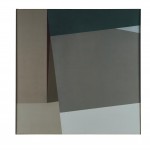
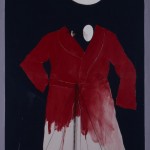
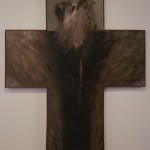

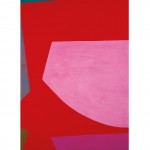
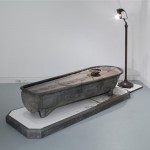

Leave a Reply